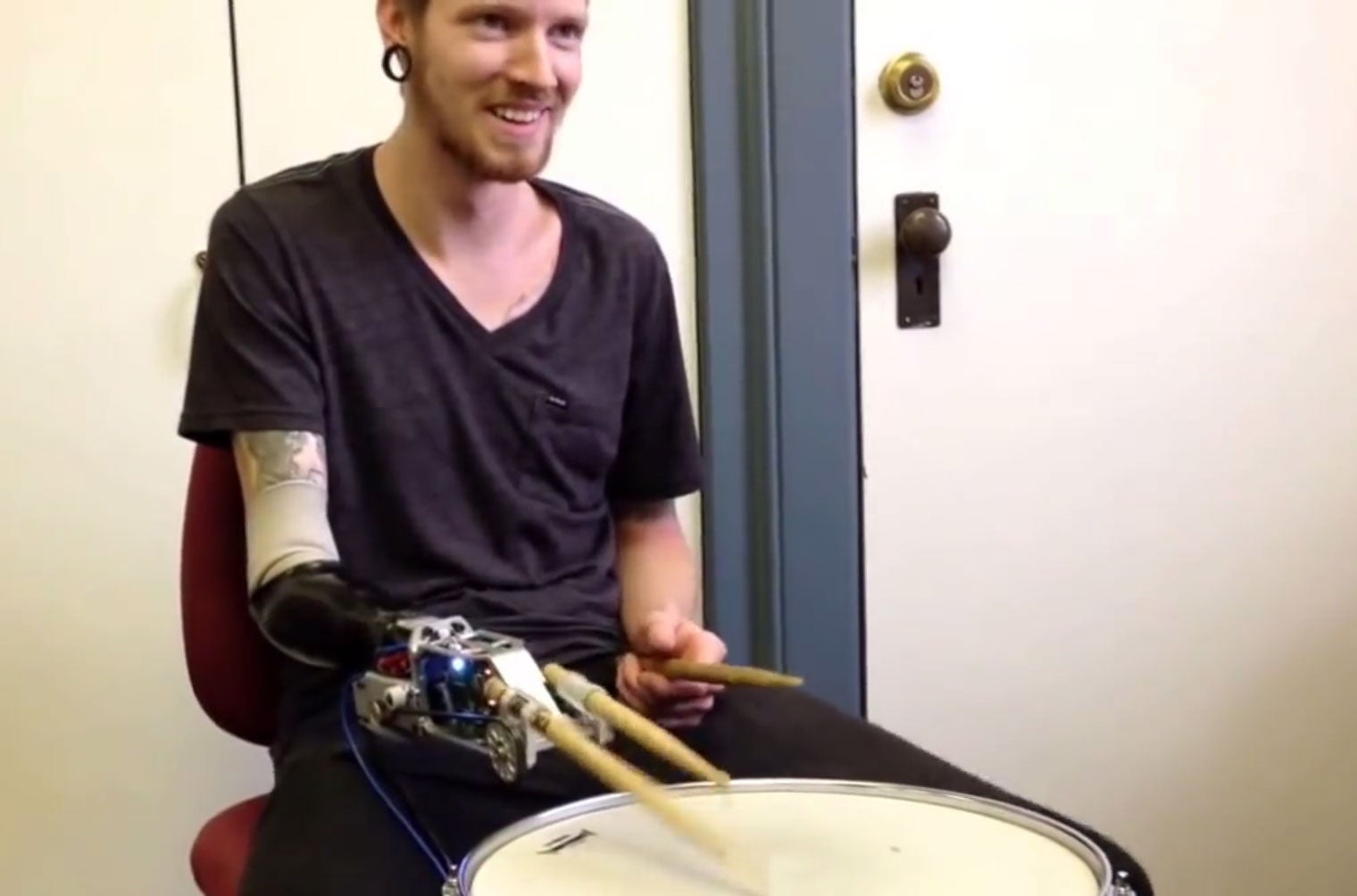The Independent's journalism is supported by our readers. When you purchase through links on our site, we may earn commission.
Amputee drummer gains 'superhuman' skills with robotic arm
Prosthetic detects electrical impulses from Jason Barnes' upper arm in order to adjust his grip, while a second stick uses algorithims to drum like jazz greats

Your support helps us to tell the story
From reproductive rights to climate change to Big Tech, The Independent is on the ground when the story is developing. Whether it's investigating the financials of Elon Musk's pro-Trump PAC or producing our latest documentary, 'The A Word', which shines a light on the American women fighting for reproductive rights, we know how important it is to parse out the facts from the messaging.
At such a critical moment in US history, we need reporters on the ground. Your donation allows us to keep sending journalists to speak to both sides of the story.
The Independent is trusted by Americans across the entire political spectrum. And unlike many other quality news outlets, we choose not to lock Americans out of our reporting and analysis with paywalls. We believe quality journalism should be available to everyone, paid for by those who can afford it.
Your support makes all the difference.Jason Barnes started playing drums at the age of 15, but after losing the bottom half of his right arm in an accident he thought his dreams of becoming a professional musician were over.
Now, with the help of a custom bionic arm, Barnes is working his way through music college in America, while the engineer who designed his unique prosthetic describes his musical ability as literally “superhuman”.
Developed by Gil Weinberg from the Georgia Institute of Technology, Barnes' prosthetic arm uses a mechanism called electromyography to pick up on the tiny electrical signals emitted by the muscles in Barnes’ upper arm.
When Barnes squeezes his upper bicep a motor in the arm adjusts how quickly it moves and how loosely it holds the stick. A second stick attached to the prosthetic beats entirely independently of Barnes, using built-in sensors to detect his drumming and then create its own complementary rhythm.
That algorithm that Weinberg developed to create this responsive beat is apparently modelled on the rhythms of jazz greats such as John Coltrane and Thelonius monk. Weinberg has built a number of other musical machines, including a marimba playing bot that Stephen Colbert said combined “two of the biggest threats to our nation: jazz and robots.”
Speaking to New Scientist about his new bionic arm, Barnes said the device was “pretty awesome”. “If it works out and it proves to be a lot more useful than my current prosthesis, I would definitely use it all the time,” he said.
Barnes, who lost half of his arm after being electrocuted cleaning a vent hood at a restaurant in January 2012, originally made his own prosthetic using a simple brace and a spring. It was rudimentary but it allowed him to enter the Atlantic Institute of Music and Media in Georgia.
With this new prosthetic though, it seems that Barnes won’t just become an ordinary drummer – he’ll be entering entirely new musical territory, making his official debut at the Atlanta Science Festival on 22 March alongside musical automatons created by Weinberg.
Join our commenting forum
Join thought-provoking conversations, follow other Independent readers and see their replies
Comments